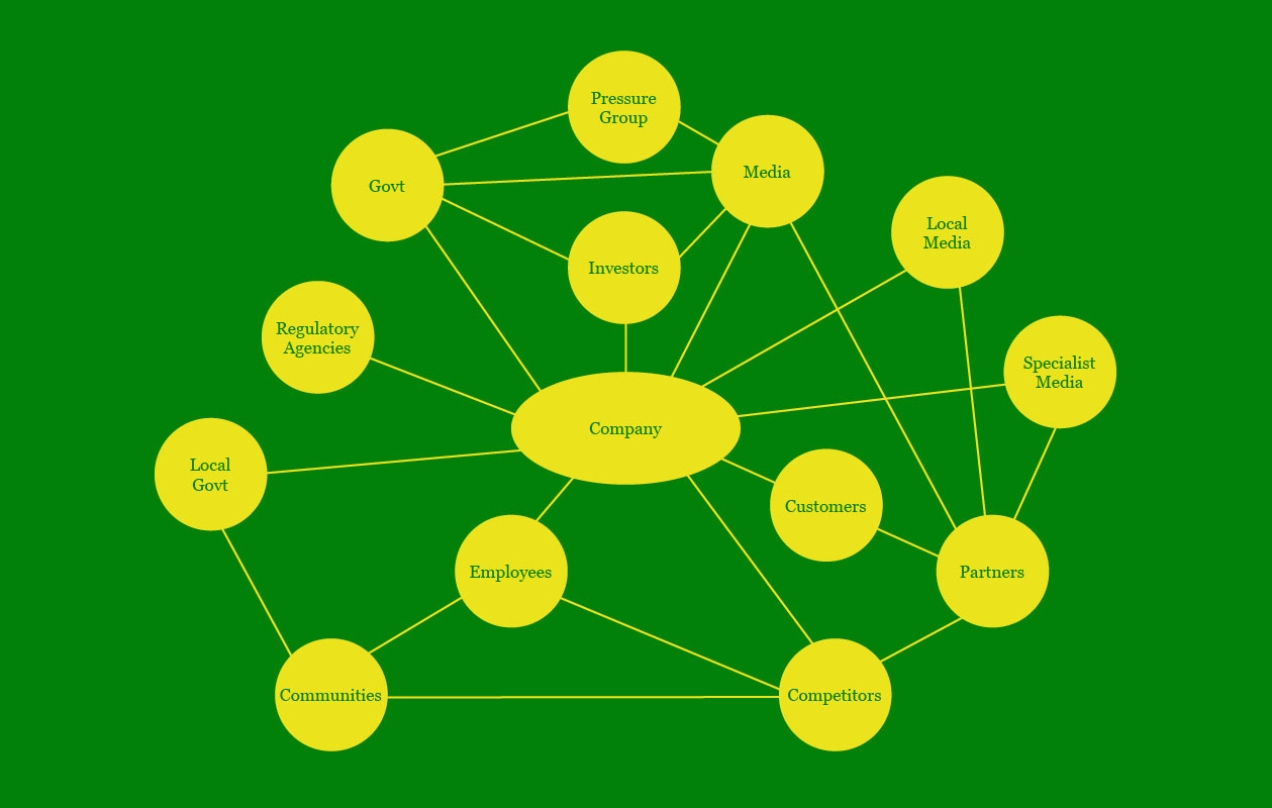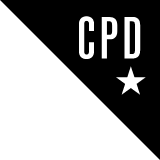Revisiting the importance of relationships in public relations practice
Public relations focuses on establishing and maintaining good relations between organizations and the community. Jon White looks at the challenges which can arise when trying to maintain them.

An anniversary like the 75th currently being celebrated by the UK's Chartered Institute of Public Relations is a good opportunity to revisit some of the basic concepts and principles underlying current practice.
When the founders of the Institute came together in 1948 to set up the Institute, they committed to developing a practice that they defined as:
“The deliberate, planned and sustained effort to establish and maintain, by conveying information and by all other suitable means, mutual understanding and good relations between a “statutory authority, government department, profession or other body or group and the community at large.â€
Criticised in media commentary at the time as a turgid description of the emerging practice the definition has been revisited many times, not least by the Institute which redefined the practice in the 1990s as being about reputation.
What's important in the founding definition is the commitment to working for good relations and mutual understanding between organisations and groups important to them.
Factors making for good relations are topics for present day practice. A Deloitte study of corporate affairs practice published in January this year identified the principal task of corporate affairs - taken as another term for high level public relations practice - is to inspire trust, as an essential foundation for satisfactory relationships.
Are there differences between good relations, and self-serving relationships?
A challenging set of questions for practice arise around commitments to good relations. Is the commitment really to 'good relations,' or to relations which serve the interests of organisations, employers or clients first? Are there differences between good relations, and self-serving relationships?
Some practitioners will argue that the priority is to serve client interests and to work to influence relationships to realise client objectives: relationships and the way that members of important groups behave are means to an end.
Looking at a familiar stakeholder map, with an organisation, group or individual at the centre and important groups ranged around the centre: the network visualized can be used for understanding problems and issues in relationships, planning for public relations activities and anticipating opportunities and risks.

Questions can be asked:
- About the current state of relationships - Are they supportive? Based on accurate perceptions? Enabling rather than obstructive?
- How do relationships need to develop over time if organisation objectives are to be realised? This is a fundamental question in public relations planning and management
- What may happen to in some way disrupt the relationships? Disruptions may be a source of opportunity - or threat
- What should the relationships be? What legal and other obligations are there, affecting the relationships, and what obligations is the organisation willing to take on in the relationships, over and above legal obligations?
This last question leads on to interests in areas such as corporate social responsibility, environmental, social and governance (ESG) obligations. It also prompts some observers of practice to suggest that in asking this question public relations advisors take on the role of social conscience for their organisations and clients, challenging decision-makers to take account of the values and interests of important and affected groups.
The origins and characteristics of important relationships have been long studied. In one of the early complete textbooks on public relations in the US, Effective Public Relations, authors Scott Cutlip, Allen Center and Glen Broom described public relations as concerned with relationships with publics on which organisations depend to thrive and prosper.
Citing this definition, UK commentator on practice Richard Bailey wrote in 2018 about public relations as relationship management, where relationships are seen as a source of social capital of value as such to organisations.
In his explanation of this view of practice, he quotes the views of US researchers such as James Grunig who have examined important aspects of relationships of concern in public relations, such as the extent of control of the relationships: who has power in the relationships?
Grunig identifies six factors important in the assessment of relationships:
- Control mutuality (the extent to which the relationship is two-way)
- Trust (can the organisation be relied on to keep its promises?)
- Commitment (long-term orientation)
- Satisfaction (do the benefits of the relationship outweigh its costs?)
- Exchange relationships (the extent to which gains are expected from the relationship)
- Communal relationships (is there concern for the welfare of the other?)
Grunig has argued for symmetry in relationships. Public relations may slip into use of language which suggests that organisation do things to the groups that are important to them: practice is to deliver content to target audiences, it is a 'broadcasting' rather than a conversational and listening practice.
Important groups need to be understood through 'audience insight' which gives communicators better ideas on how they may be reached, influenced and persuaded.
Working for good relations
What leads to the development of good relations has also been extensively studied, most often in terms of interpersonal relationships. Good relationships with others are seen as important to individuals' mental health and well-being.
In conflict resolution and negotiation, emphasis is placed on the importance of resolving conflicts and negotiating outcomes in such a way as to ensure that relationships can continue, after the conflict or negotiation has been resolved.
In a recently published book on good interpersonal relations, Good Relations, psychologist Janet Reibstein stresses that relationships need to be built patiently, drawing on empathy, an ability to appreciate the difference of others and to see the world as though through their eyes.
Communication needs to be collaborative, clear and concise and likely to encourage others to thinking collaboratively.
She sees communication as central to the development of relationships. It needs to be collaborative, clear and concise and likely to encourage others to thinking collaboratively. It also has to be used promptly in making repairs, to deal with upsets and breaks in understanding.
It's easy to find examples in current public communication and attempts at sustaining relationships where these basic skills are not applied - for example, in recent disputes between government, employers and unions around cost-of-living questions.
Essential to good relations is trust, as the Deloitte study mentioned earlier emphasizes. Many studies have confirmed the benefits of trust, when it emerges from a track record of performance and of meeting commitments, and recognised expertise.
Drawing tentative conclusions: good relations depend on clear communication, an equality in relations, trust between parties to relationships where commitments made over time have been met, and where - even if interests and hoped for outcomes differ - differences can be reconciled to the extent that parties to relationships remain willing to stay in the relationships.
Going forward: public relations' interest in good relations
Individual practitioners can examine their practice and ask if they are really working for good relations, or relationships which serve the interests of employers or clients first, with less regard for the interests of others in the relationships.
Working for good relations is a topic on which professional associations like the CIPR can refocus, drawing evidence where this can be found that good relations are beneficial to business, as well as to collective benefit in wider society.
Most recently, the Institute has focussed on misuse of information in relationships, calling out greenwashing, inappropriate language, and the misuse and misreporting of data, which work against transparency and clear and concise communication. It has also looked specifically at lobbying standards and the relationships between lobbyists and parliamentarians.
Regulatory advice to the Institute deals with questions of ethics and relations between practitioners and their clients.
Going forward, there may be considerable benefits to practice from, first, developing greater understanding of the factors contributing to good relations and, second, arguing publicly for the practice's interest in good relations.
Understanding of trust is one area for examination. There is annual interest in the findings of the Edelman Trust Barometer, where declining levels of trust in social institutions are identified regularly. However, trust needs to be tempered. Writing on re-thinking trust in the Harvard Business Review in June 2009, Roderick Kramer concluded that to reap the full benefits of trust, we as individuals need to learn to trust wisely.
In practice, as we consider the groups that are important to the work that we do, additional questions can be asked about the level of trust they have in what might be suggested to them - and the organisations making those suggestions.
Also open for re-examination are the approaches taken to communication, against the requirement in building good relations for clear, concise communication through trusted channels of communication.
Underlying all approaches to good relations is the finding that these will be built on consistent performance, on making and keeping to commitments, and meeting expectations developed while establishing and maintaining relationships.
For consideration is the idea that, as professional public relations associations develop - the CIPR towards its 100th anniversary - they may take to arguing for good relations in wider society, as doctors might argue for good medical practice, as part of their commitment to the public service that is a foundation for professional practice.


